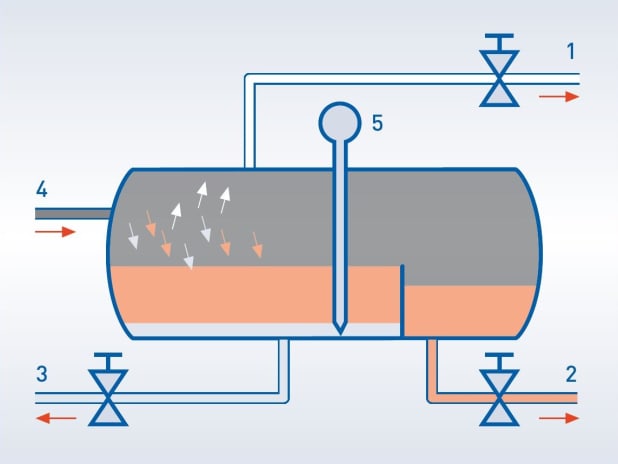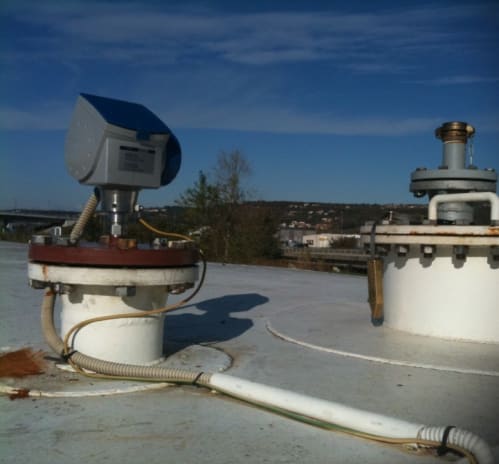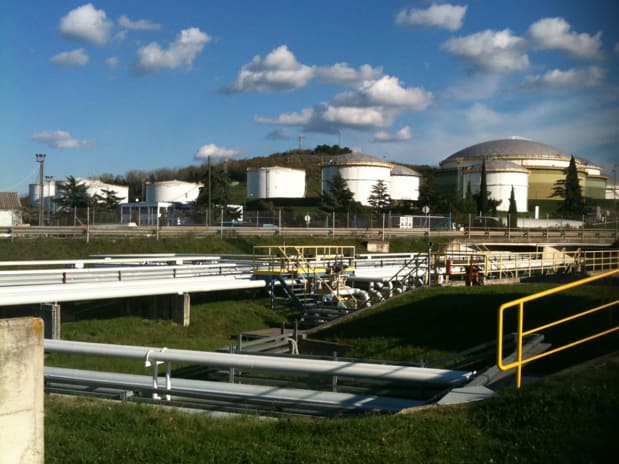Interface measurement on a crude oil separator
Application Note | Oil & Gas
- Oil recovery from water and other components
- Measurement of the water interface level during separation process
- Continuous measuring results for the stock management

Background
Crude oil (petroleum) is a naturally occurring, flammable mixture of hydrocarbons and other liquid organic compounds. It is recovered mostly through oil drilling, before being refined. One of the first steps is to separate the hydrocarbons from the water and other unwanted components coproduced during the oil recovery. This is done by separating vessels (separators).
Measurement requirements
A European refinery offering storage and handling of petroleum products has a separator, 4.6 m high. Its water interface level needs to be continuously regulated to avoid water entering the oil skimmer or oil entering the water evacuation. Previously, this level was calculated approximately, based on the difference between the quantity of crude injected and the quantity of water extracted. From time to time, this calculation was checked manually using a gauge rod partly covered in “water finding paste”. In order to optimize their process and stock management, the refinery was looking for a level transmitter, able to deliver reliable and accurate measurements directly to the control room. The device was to be easy to install and use so as to keep service low. It was an essential requirement of the technical solution to be ATEX approved.
KROHNE Solution
KROHNE delivered an OPTIFLEX 1300 C TDR guided radar level transmitter with ATEX Ex ia approval, a Ø 2 mm single cable probe and a G ½ process connection to which the customer added his own fl ange.Installed on the roof of the separator, the device is capable of detecting the water interface below the oil layer. It continuously measures the water interface level and automatically transmits the data to the control room.
Customer benefits
The demanding measurement requirements of this application were fully met with only one TDR level transmitter. The device is capable of detecting the water interface below the oil layer with great accuracy and reliability. This enables the customer to maintain the water level as low as possible. The measured data are automatically and continuously transmitted to the control room via HART communication, enabling for optimized process and stock inventory. Manual checks become obsolete. Being a 2-wire device, the OPTIFLEX 1300 C needs less wiring than 4-wire transmitters. It is easy to install and operate, and requires only little maintenance. All this makes it a money saving solution for the customer.






